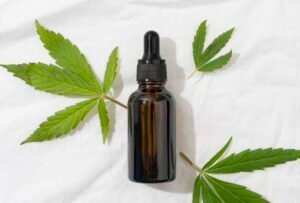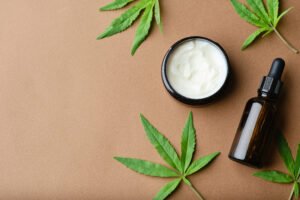When it comes to cannabis consumption, people generally have two primary objectives: seeking the euphoric high or harnessing the potential medicinal benefits. Consuming raw marijuana weed may not provide the same effects as other methods, but it could offer some advantages.
The effects of marijuana are attributed to its active components: delta-9-tetrahydrocannabinol (THC), cannabidiol (CBD), and cannabigerol (CBG). Surprisingly, these three crucial ingredients are not naturally found in raw marijuana. They emerge as a result of a chemical process known as decarboxylation.
Due to this process, raw marijuana may not induce the typical high that people associate with cannabis use. However, researchers continue to explore the potential therapeutic uses of raw marijuana.
Let’s delve into whether consuming raw marijuana weed can lead to a high and examine the potential medicinal effects of its inactive compounds. Additionally, we’ll explore alternative methods of using cannabis.
Raw marijuana, while edible, does not produce the same effects as cannabis-based products. It must undergo a process called decarboxylation to become activated. In its raw form, cannabis contains tetrahydrocannabinolic acid (THCA) and cannabidiolic acid (CBDA). These compounds require exposure to heat, such as through smoking or baking, to transform into their active counterparts, tetrahydrocannabinol (THC) and cannabidiol (CBD). As a result, eating raw marijuana does not yield the same effects as consuming heated cannabis, found in products like edibles, tinctures, and baked goods.
Also Read: Acapulco Gold
Understanding the Mechanism of Decarboxylation
To grasp the concept of decarboxylation, it’s essential to start with cannabis in its natural, unprocessed state. The cannabis plant contains a vast array of cannabinoids, with the most famous ones being tetrahydrocannabinol (THC) and cannabidiol (CBD). These cannabinoids are responsible for the effects associated with cannabis consumption, as they interact with the body’s endocannabinoid system.
However, THC and CBD do not exist in the cannabis plant in their familiar forms. Instead, they are present as tetrahydrocannabinolic acid (THCA) and cannabidiolic acid (CBDA), respectively. THCA and CBDA are inherently thermally unstable. When exposed to heat or light, such as during smoking or cooking cannabis, their chemical composition undergoes a transformation, giving rise to THC and CBD.
Once these cannabinoids have been “activated” through this process and are consumed, they engage with the body’s endocannabinoid system through specific receptors known as cannabinoid receptors, which are categorized as CB1 and CB2 receptors. CB1 receptors are predominantly concentrated in the brain and central nervous system, while CB2 receptors are primarily located in the immune system. The sensation of being “high” that occurs after consuming cannabis results from THC binding to the CB1 receptors in the brain. However, if cannabis remains unactivated (in other words, when THCA does not undergo decarboxylation to convert into THC), the high does not occur. Consequently, consuming raw cannabis will not induce a feeling of being high.
Also Read: Cannabis Terpenes
Why Consuming Raw Marijuana Weed Is Beneficial for Your Health
Raw Marijuana Weed Doesn’t Cause a High
When it comes to raw marijuana weed, you don’t have to worry about getting high. The primary psychoactive compound in cannabis is THC, but in its raw form, cannabis contains THCA, which lacks psychoactive effects. THCA only converts to THC, the psychoactive compound, when it undergoes decarboxylation, typically through heating. This makes raw marijuana weed an ideal choice for those seeking the health benefits of cannabis without the high.
Rich in Vitamins, Minerals, and Fiber
Raw marijuana weed is surprisingly nutritious. It contains essential vitamins and minerals, including Vitamin K for blood clotting, Vitamin C for the immune system, Iron for blood oxygenation, Calcium for bone health, and Folate for DNA repair. Additionally, it is high in fiber, making it a valuable dietary addition for those looking to increase their fiber intake.
Loaded with Antioxidants
Antioxidants play a crucial role in protecting the body from damage caused by stress and free radicals, which can contribute to various health issues, including cancer and blood vessel disease. Raw or cooked, marijuana weed is packed with antioxidants, helping your body combat oxidative stress and stay healthy.
A Safer Alternative to Smoking
Smoking any substance can be harmful to the respiratory system, leading to inflammation and tar buildup. In contrast, using marijuana in your cooking eliminates these risks associated with smoking. When marijuana is ingested orally, it undergoes a different metabolic process in the liver, producing a more potent and longer-lasting high, making it a safer option for those concerned about their lung health.
Effective Pain Relief
Consuming marijuana, whether raw or cooked, can provide powerful pain relief. Compared to smoking, ingesting marijuana often results in a more intense and longer-lasting full-body high, making it an effective choice for managing pain over an extended period.
Relieves Nausea
Medical marijuana is known for its ability to reduce nausea and stimulate appetite. Numerous studies have shown its effectiveness in treating nausea and vomiting caused by various factors, including chemotherapy. While edibles may take longer to take effect, they are a reliable option for managing nausea, particularly when you can anticipate its onset.
Potential Anti-Cancer Benefits
Recent updates from the National Cancer Institute suggest that cannabis has potential anti-cancer properties. Research on animals has shown that cannabinoids in THC can target and eliminate cancer cells. To harness these benefits, highly concentrated cannabis oils can be ingested, often mixed with foods like cookies, brownies, vegetables, or toast.
Also Read: Cannabis for Psoriasis
Effects of Raw Weed on Your Health
Apart from its lack of psychoactive properties, researchers have turned their attention to exploring potential therapeutic effects associated with raw marijuana weed. These effects encompass a variety of aspects, including:
Protection of Brain Cells
A study published in the British Journal of Pharmacology highlighted the potential protective effect of THCA (delta-9-tetrahydrocannabinolic acid) on brain cells. This discovery holds significance, especially for experts studying neuroinflammatory diseases and neurodegenerative conditions like Huntington’s disease. THC, in its acidic form, may emerge as a promising therapeutic option for such cases.
Tumor Necrosis Inhibition
Another research, featured in the journal International Immunopharmacology, delved into the effects of unheated cannabis extract. Remarkably, the study observed that THCA had the ability to inhibit tumor necrosis factor-alpha levels in immune cells, and this inhibitory effect endured over an extended period. While promising, further studies are required to validate the potential impact of THCA on the immune system and its applications in immune-related conditions.
Antinausea Effects
Researchers have also turned their attention to the possible anti nausea properties of THCA. In a separate investigation documented in the British Journal of Pharmacology, scientists explored THCA’s anti nausea effects in rats. The results revealed its effectiveness in reducing nausea and vomiting. There is a suggestion that THCA might be a more potent alternative to THC in combating nausea and vomiting. However, additional research involving human subjects is imperative to ascertain whether these effects translate to humans.
Low-Dose Anti Nausea and Enhanced Efficacy
In addition to THCA, low doses of cannabidiolic acid have demonstrated anti nausea and anti-vomiting effects. Interestingly, cannabidiolic acid was found to enhance the effectiveness of the anti nausea drug ondansetron. While these findings are promising, further human studies are needed to corroborate these results.
Also Read: Effects of Marijuana Use
How to enjoy Raw Marijuana Weed Edibles Safely and Legally
When it comes to consuming Raw Marijuana Weed edibles, whether for relaxation or managing medical conditions, safety and legality are paramount considerations. Ensuring a positive experience while harnessing the potential benefits of Raw Marijuana Weed requires adherence to specific guidelines.
If you’re exploring Raw Marijuana Weed edibles as a treatment option for a medical condition, it’s essential to consult your healthcare provider to determine if medical marijuana is a suitable choice. Depending on your location, you may obtain a physician’s “recommendation.” In the United States, medical marijuana is legal in 36 states, and its use is also permitted in various countries worldwide, including Canada and numerous European nations.
Medical conditions such as chronic pain, anxiety, multiple sclerosis, terminal illness, and inflammatory bowel disease may warrant a medical marijuana physician’s recommendation. In contrast, the legal landscape for recreational Raw Marijuana Weed use varies significantly, with many regions, including several U.S. states, maintaining its illegality. As of 2021, only 16 U.S. states, two territories, and the District of Columbia allow recreational Raw Marijuana Weed use.
It’s crucial to note that while Raw Marijuana Weed may be legal at the state level in certain areas, it remains illegal at the federal level in the United States. The federal government classifies Raw Marijuana Weed as a Schedule I substance under the Controlled Substances Act, grouping it with substances like heroin. According to the U.S. Drug Enforcement Administration (DEA), Schedule I substances are deemed to have a high potential for abuse and no recognized medical use.
Also Read: Cannabis Hyperemesis Syndrome
However, it’s important to recognize that this classification is a subject of debate, with many individuals and scientists advocating for the medicinal benefits of Raw Marijuana Weed. Researchers have consistently questioned these restrictions, which hinder comprehensive studies on the real-world use of Raw Marijuana Weed. Some argue that the current legal status impedes legitimate research into the medical potential of Raw Marijuana Weed.
As attitudes and policies surrounding Raw Marijuana Weed evolve, individuals must stay informed and adhere to local regulations regarding both medical and recreational Raw Marijuana Weed use. Prioritizing safety and legality is essential for a positive and responsible Raw Marijuana Weed edibles experience.
FAQs
Q. Can consuming raw marijuana weed lead to a high?
A. No, consuming raw marijuana weed does not lead to a high. Raw cannabis contains tetrahydrocannabinolic acid (THCA), which lacks psychoactive effects. It only converts to THC, the psychoactive compound, through a process called decarboxylation, typically involving heat. This makes raw marijuana weed suitable for those seeking the health benefits of cannabis without experiencing a high.
Q. What are the potential health benefits of raw marijuana weed?
A. Raw marijuana weed is rich in vitamins, minerals, and fiber, making it a nutritious addition to your diet. It’s loaded with antioxidants, offering protection against oxidative stress. Additionally, it provides effective pain relief, relieves nausea, and may have potential anti-cancer benefits. It’s a safer alternative to smoking cannabis, especially for lung health.
Q. Is raw marijuana weed legal?
A. The legality of raw marijuana weed varies by location. In some regions, it may be legal for both medical and recreational use, while in others, it might be restricted or illegal. It’s essential to be aware of local regulations and stay informed about changing laws regarding marijuana use.
Q. Can raw marijuana weed be used as a medical treatment?
A. Raw marijuana weed has potential therapeutic benefits, such as protecting brain cells, inhibiting tumor necrosis, and providing anti nausea effects. However, more research, including human studies, is needed to fully understand its medical applications. Consulting with a healthcare provider is crucial when considering it as a treatment option.
Q. What is the difference between raw marijuana weed and heated cannabis products?
A. Raw marijuana weed contains THCA and CBDA, which are non-psychoactive. Heated cannabis products, like edibles and smoked cannabis, have undergone decarboxylation, converting THCA into THC, resulting in the typical psychoactive effects associated with cannabis consumption.
Q. How can one enjoy raw marijuana weed edibles safely and legally?
A. To enjoy raw marijuana weed edibles safely and legally, it’s essential to adhere to local regulations. Consult with a healthcare provider to determine if medical marijuana is suitable for your condition. Be aware of both state and federal laws, as marijuana’s legal status can vary. Prioritize safety and responsible consumption for a positive experience.








